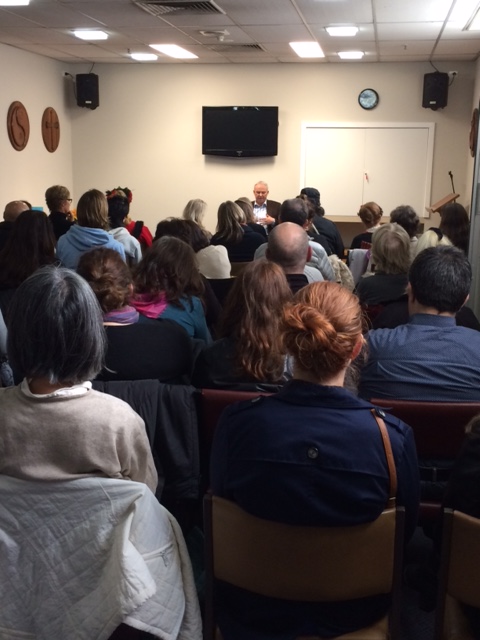Synchronicity is intriguing. It cannot help but evoke a sense of wonder when we experience a profoundly personal and meaningful coincidence that relates to an intimate detail in our lives, seemingly beyond chance. Sometimes it helps connect us closer to others, including those who are no longer with us. I heard this touching example when addressing an audience at the Theosophical Society bookshop in Melbourne last month.
Ben was visiting New York sometime after his mother died. He was feeling a little guilty, as his trip was funded by a modest inheritance from his mother who had struggled financially in later years. Whilst traveling on the subway he had an inexplicable urge to get off near Lincoln Square. He then wandered into a building, the Public Library for Performing Arts, which happened to be hosting a major Frank Sinatra exhibition. This immediately gave him a warm sense of connection with his mother, as she had been a great Sinatra fan. It led to him feeling more at ease about undertaking the trip, as though his mother would have approved.
On returning home, Ben told his sister of this pleasant coincidence. His sister later related the details to her daughter in a second-hand bookshop. Just as she was doing so, they noticed a slim book inexplicably falling off a table nearby. They picked it up and were surprised to see the title – “Why Sinatra matters”. They opened the book and saw a dedication to an Ester. That happened to be the name of Ben’s mother.
Such experiences naturally lead people to wonder about a possible connection with the spirit, or soul, of someone who is deceased. In Ben’s case, this was accentuated by one or two other remarkable coincidences leading up to his mother’s funeral. They similarly gave him a warm and connected feeling toward his mother, which no doubt would have assisted his healthy grieving.
As a psychologist, I used to be most sceptical as to whether such reported experiences were anything other than random occurrences. However, I hear of such stories too often, from people who are obviously rational and mentally well, to dismiss them as mere happenstance or superstition. Nonetheless, as profoundly meaningful, touching or worthwhile such experiences may be, they are usually wholly disregarded by modern psychology. They are not easily explained scientifically or rationally.
Indeed, a recent book I read by an esteemed psychologist stated that he had noticed a consistent pattern in clients whereby those who expressed paranormal beliefs had confused them with an “unremembered past” and “difficult childhoods”. He suggested that such experiences were best explained by distorted perceptions associated with childhood trauma.
Such professional “clinical wisdom” will only inhibit people from telling others of their experiences of powerfully meaningful coincidences that compellingly seem to go beyond chance. Such experiences remain no less personally meaningful, but will not be divulged.
I now find that my appreciation of the range of legitimate human experience has greatly broadened since I have written about, and openly spoken about, synchronicity. I used to believe that I had been open to hearing almost anything from clients, but I was unaware of the extent to which people would choose to conceal their synchronistic or other transpersonal experiences from me lest they be judged mad.
Some things are beyond the realm of current science, or what can be rationally explained. However, if a phenomenon seems profoundly meaningful to many people, and if it leads to positive benefits, we should be careful not to dismiss it too readily. In my experience, synchronistic experiences can be extraordinarily powerful in leading to a sense of connection to others, and particularly loved ones – whether alive or deceased. In my view, dismissing synchronistic events as merely resulting from random occurrence, as opposed to being demonstrably meaningful, is not so much rational, as rationalistic.
For an example of how synchronicity can help recover from traumatic grief, see Case Study 2 in the following conference article link.

